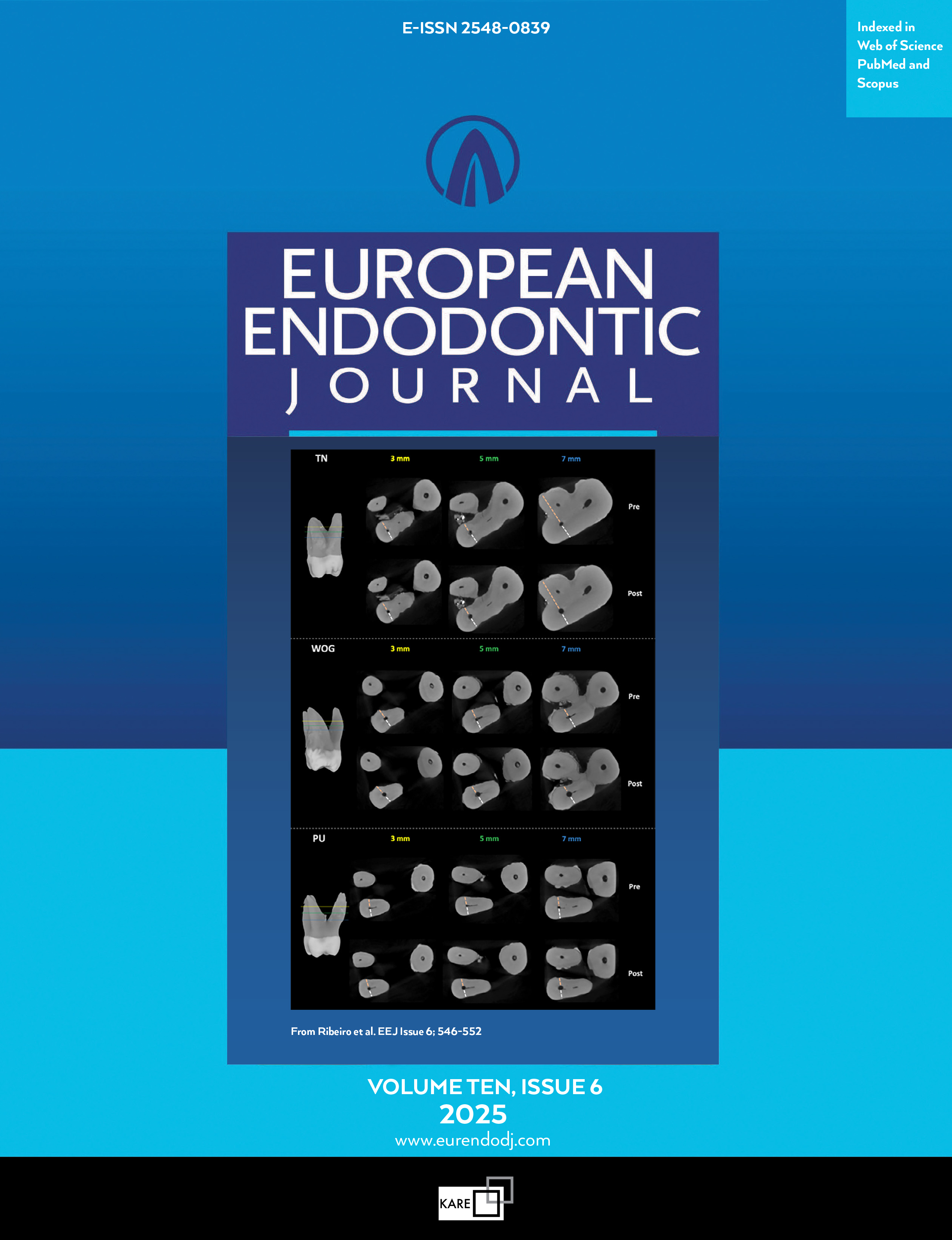Metrics
2024 IMPACT FACTOR
5 year Impact Factor
Eigenfactor Score
2024 CiteScore
Journal Citation Reports
(Clarivate 2025, JIF Rank)
Efficacy of Gel- and Solution-Based Formulations of Conventional Endodontic Disinfectants During Root Canal Shaping: A Systematic Review of Laboratory and Clinical Studies
Kavalipurapu Venkata Teja1, Kaligotla Apoorva Vasundhara2, Athina Christina Georgiou3, Gianrico Spagnuolo4, Luigi Esposito4, Niccoló Giuseppe Armogida41Department of Conservative Dentistry and Endodontics, Malla Reddy Institute of Dental Sciences, Malla Reddy Vishwavidyapeeth, Hyderabad, Telangana, India.2Department of Prosthodontics, Saveetha Dental College and Hospitals, Saveetha Institute of Medical and Technical Sciences, Saveetha University, Chennai, Tamil Nadu, India
3Department of Endodontics, Academic Centre for Dentistry Amsterdam (ACTA), University of Amsterdam and VU University Amsterdam, Amsterdam, The Netherlands
4Department of Neuroscience, Reproductive Sciences and Dentistry, University of Naples Federico II, Naples, Italy
This systematic review aimed to evaluate the comparative efficacy of gel-based versus solution-based formulations during root canal shaping in terms of smear layer and debris removal, instrument separation, file fatigue, bacterial reduction,debris extrusion, and postoperative pain. Following PRISMA 2020 guidelines, a comprehensive search of five electronic databases (PubMed, Scopus, Web of Science, Lilacs, and Google Scholar) and grey literature sources was conducted up to February 2025. The inclusion criteria encompassed randomized controlled trials, in vitro, ex vivo, and clinical studies that compared gel- (e.g., EDTA gel, NaOCl gel, CHX gel) with solution-based (e.g., NaOCl, EDTA, CHX) formulations during root canal shaping. A total of 37 studies were included. Data extraction focused on defined outcomes, and a narrative synthesis was performed due to study heterogeneity. In vitro/ex vivo: Most laboratory studies showed that gel-based formulations improved glide path lubrication and reduced apical extrusion in some models. However, they were consistently associated with increased dentinal debris retention, higher torsional/cyclic fatigue, and a greater risk of file separation due to formation of dense dentinegel sludge. Solution-based formulations demonstrated superior smear layer removal, better cleaning efficiency, and stronger antimicrobial activity. Clinical trials showed no significant advantage of gel-based formulations in reducing bacterial load or postoperative pain. Sodium hypochlorite solutions provided better antimicrobial outcomes, while pain scores were comparable between gel and solution groups. Overall, clinical findings favoured solution-based formulations. Although gel-based formulations offer some procedural advantages, their overall clinical performance is inferior to solution-based formulations, particularly concerning cleaning efficacy, instrument safety, and antimicrobial action. Their routine use during root canal shaping should be approached with caution and ideally followed by thorough irrigation. Further well-designed clinical trials are required to establish standardized protocols and clarify the potential role of gel-based formulations in endodontic irrigation. (EEJ-2024-11-169)
Keywords: Endodontics, irrigants, pain, root canal, root canal preparation
Manuscript Language: English
(178 downloaded)



